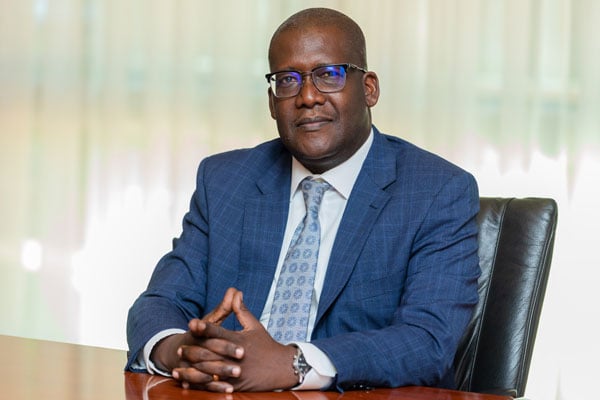Kenya launches SGR train as Ugandans wait

Crew members pose outside Kenya’s Standard Gauge Railway wagon recently. COURTESY PHOTO
KAMPALA- Kenyan President Uhuru Kenyatta will, today, take a ride on the passenger services of the $3.44b Standard Gauge Railway (SGR).
This is a promise he has delivered on as he embarks on a campaign for a second term in office.
Delivering the first phase – Mombasa to Nairobi – of the SGR represents a step to connect the entire Northern Corridor and ease movement of cargo.
Much has been spoken of Kenya’s fast progress – in four years, a route has been completed – but that is only just the start.
As Kenya prepares for the pompous launch of the first phase, there is a lot more work to be done.
According to the Northern Corridor Infrastructure Projects protocol, the SGR is expected to link at least four countries of Uganda, Kenya, Rwanda and South Sudan.
The completion of a route length of 472kms means that the railway still has to snake through rift-valley all the way to Malaba before it can link to Kampala.
Last week, President Uhuru Kenyatta tweeted that Kenya had secured financing for the phase from Naivasha to Kisumu – about 150kms from the Uganda – Kenya official land crossing – along the shores of Lake Victoria.
That has raised speculation that Kenya will only be working on the section to Kisumu, leaving Uganda at crossroads.
Why Kampala is a priority
Eng Solomon Ouna, the chief technical officer of the SGR in Kenya, says there is still a long way to go. He worked for the East African Railways before a concession was awarded to Rift Valley Railways.
“Even in history when the old meter gauge was being constructed, the first stop was linking it to Kisumu, where then cargo would be loaded onto ships and transported by water – Lake Victoria – to Kampala. But that was deemed unsustainable after the volumes of cargo increased but could not be moved by ship. That is how a decision was made to construct a line linking Kisumu to Malaba to Kampala,” he explained to Daily Monitor in a telephone interview yesterday.
The sources of funding for the SGR are the same – China’s Exim Bank. In December 2016, Uganda and Kenya signed a bilateral agreement in which points to synchronisation of both projects – a key condition to secure the financing for the first phase.
Even as Kenya is launching the first phase, the discussion is on when it links to Uganda. The working assumption is that costs of transport will reduce, industrialisation will be promoted and job creation enhanced.
“It will be very expensive for us to operate if the SGR doesn’t reach Kampala. Also, it wouldn’t make much sense if we are promoting the growth of the Port of Mombasa but then only have our transport system reach halfway,” Mr Ouna added.
At least more than 50 per cent of the cargo handled at the Port of Mombasa is destined for markets like Uganda.
The estimates indicate that on annual basis about 11.2 million tonnes of cargo is moved between Kenya and Uganda. Kenya has structured its SGR into several phases.
According to Mr Ouna, Nairobi – Naivasha is Phase IIA, Naivasha – Kisumu is PhaseIIB and then Kisumu – Malaba is Phase III. For all these phases, Kenya has to apply for financing.
Financing dilemma
Uganda, Rwanda, and Kenya have all lined up at Exim Bank to negotiate the loans as a block but payments will be made to different governments.
Kenya has so far raised the $3.44b for the first phase and also secured another $1.5b for the Nairobi-Naivasha. “We still have to look for financing for the Naivasha to Kisumu route,” Mr Ouna pointed out.
The announcement by President Uhuru Kenyatta that funding had been secured for the route to Kisumu is still being considered an agreement in principal.
Uganda is also yet to secure financing for the first phase from Malaba to Kampala of $2.4b. Financial closure has on two occasions been delayed over several matters including the repayment model and project appraisal. A team from Exim Bank is expected in the country in June 2017 to carry out project appraisal on the route, the fiscal regime, the state of the economy and repayment plan. One of the key areas they look at is whether the debt sustainability mechanisms are in place to ensure the country does not default.
Uganda’s opportunity
Uganda is already carrying out compensation on land for people that may be affected by the project from Tororo to Kampala. The government has insisted that the SGR is one of the projects that will lead Uganda to eventual industrialisation once completed. “We are competing for investors with other countries. If investors come here and they find a mode of transport that takes long to deliver their produce, then they will not bring their money here,” said Eng Kasingye Kyamugambi, the SGR coordinator in Uganda. Once they are able to transport raw materials and finished products from Uganda to Kenya – in a single day – then it will facilitate more trade. For now, Kenyans are set to have the first feel of a five-hour train ride between Mombasa and Nairobi with several stops along the way.



